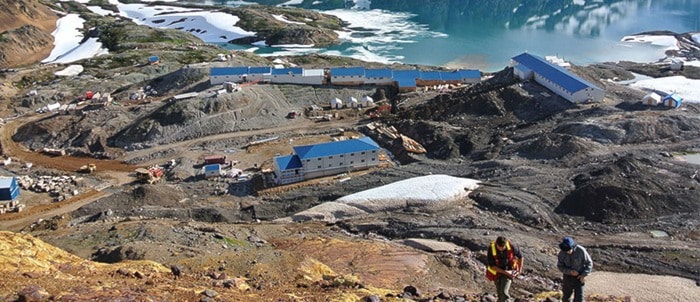A provincial environment assessment certificate issued last week moves the US$747 million Brucejack gold mine 65 kilometres north of Stewart closer to fruition.
Pretivm president and CEO Robert Quartermain hopes to obtain the necessary federal environmental approval and permits and start construction this summer.
He said his Vancouver-based company would need 800-900 employees for construction. The mine itself would have 500 employees working over its 18-year operating life. Construction is expected to be completed in 2017.
Pretivm also has a Smithers office.
“We’ll continue to work out of Smithers in support of the project as we get up into operation, and we’ll certainly be hiring more people for that office as we go forward,” said Quartermain.
The CEO said the company’s policy is to hire as many people from northwest B.C. as possible to work at extracting the 2,700 tonnes of ore per day. He pointed to his past experience running mining company Silver Standard Resources in South America as an example of local hiring practices he aims to achieve.
“We built one mine in Argentina and over 90 per cent of the employees were individuals who lived within a couple hundred kilometre catchment radius.
“So here I expect we will be employing people from Smithers, Terrace, New Hazelton, up through Gitanyow, Stuart and Dease Lake,” said Quartermain.
The project will not have a tailings pond, but instead deposit tailings paste from a plant on the surface into Brucejack Lake.
“Because it’s underground, about half the material we actually mine will go back into the underground facilities themselves as paste backfill, said Quartermain.
“The other material will go into Brucejack Lake, and this is a lake which has no fish in it. The closest fish to us are 20 kilometres downstream... We have a very small environmental footprint, less than 10 hectares because of the high grade nature of the project,” added Quartermain.
The mine is within the Regional District of Kitimat-Stikine and on traditional Nisga’a territory. The provincial approval comes with 15 conditions which include communicating with aboriginal groups and regional communities about economic and training opportunities and mitigations for avoiding adverse social impacts.
“The Skii km Lax Ha have asserted rights of interest in traplines along our access road. The Nisga’a have rights, this is within their sealand area; and then the Tahltan are largely to the north of us but also have some asserted rights at the start of our access road,” said Quartermain, who added jobs and training will be offered to members of the local First Nations.
The 30-member Skii km Lax Ha largely live in the Hazeltons.
Quartermain came out of retirement to purchase Brucejack from Silver Standard in 2010, raising $283 million in Canada’s third-largest initial public offering according to Pretivm’s CEO and first shareholder.
“B.C. is known as a mining-friendly jurisdiction. There are many mines operating in this province, and many mines are continuing to be permitted. In a global basis, it often takes a long time to be permitted an operation. In the case of Pretivm, we only discovered high grade gold in 2011 and here we are now and we’re already through the environmental process getting ready to start construction once we receive the permits,” said Quartermain, adding the company has spent about $300 million up to this point, mostly in northern B.C.
